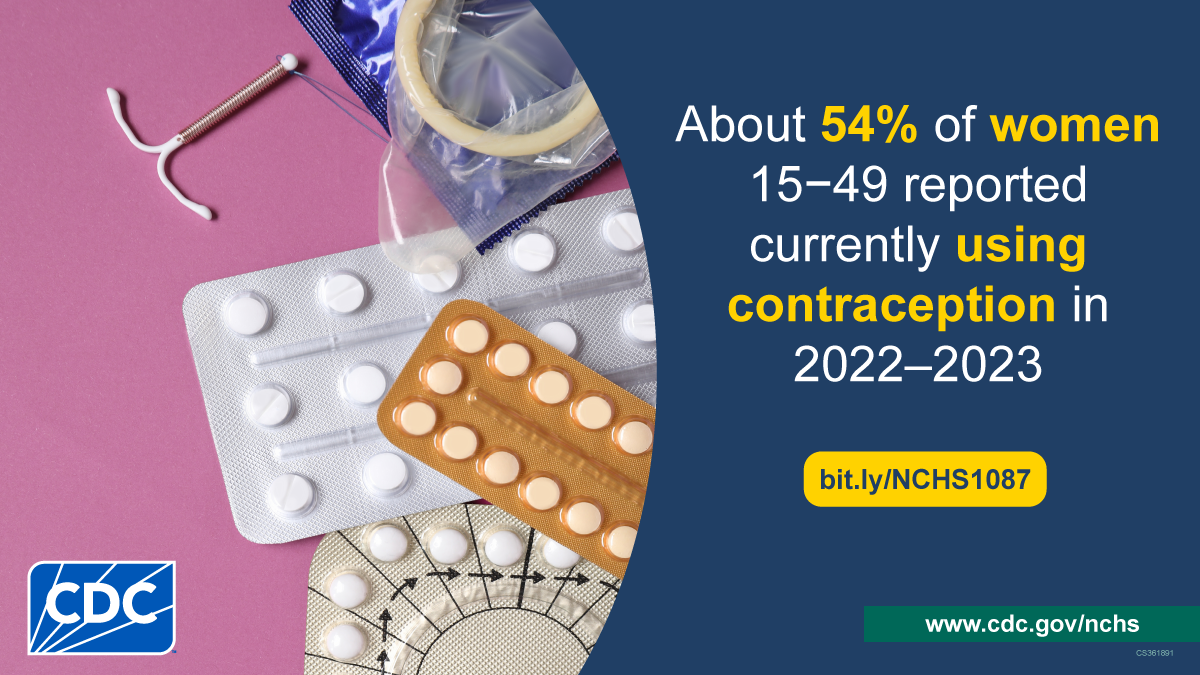Men and Women’s Use of Birth Control
Posted on byUnderstanding how men and women use birth control (contraception) gives us important information about trends in fertility, like birth rates and unintended pregnancies. Two new reports from the National Center for Health Statistics highlight patterns in the contraceptive methods men and women are using.
Vasectomy Use Among Men
 The first report looks at men who ever had a vasectomy. A vasectomy is a surgery that permanently prevents a man from having children. According to the report, which features data from the 2022–2023 National Survey of Family Growth (NSFG), about 7% of men ages 18–49 have had this procedure.
The first report looks at men who ever had a vasectomy. A vasectomy is a surgery that permanently prevents a man from having children. According to the report, which features data from the 2022–2023 National Survey of Family Growth (NSFG), about 7% of men ages 18–49 have had this procedure.
The number of biological children a man has may affect his decision to get a vasectomy. Among men with no biological children, only 2% have had a vasectomy compared with 5% of men with one child. That number increased to 18% for men with two or more biological children.
Women’s Contraceptive Methods
The second report looks at contraceptive methods used by women, including female sterilization, which refers to surgical procedures that prevent pregnancy; the pill; and other methods.
This report looks at the top four contraceptive methods that women were using in the 2022–2023 NSFG and differences in use by age, race and Hispanic origin, and education level.
 More than half of women (54%) were currently using some form of contraception. The most popular methods included female sterilization (12%), the pill (11%), long-acting reversible options including implants and IUDs (11%), and male condoms (7%).
More than half of women (54%) were currently using some form of contraception. The most popular methods included female sterilization (12%), the pill (11%), long-acting reversible options including implants and IUDs (11%), and male condoms (7%).
There were notable differences in current contraceptive use based on age. For example, 26% of women ages 40–49 were using female sterilization, compared with 2% of women ages 20–29. Compared with older women, younger women more often used the pill, with14% of females ages 15–19 using it compared with 7% of women ages 40–49. Additionally, 12% of women ages 30–39 used implants or IUDs, while 5% of females ages 15–19 used these methods.
About 46% of women were not using contraception when they took the survey. Women gave various reasons for not using contraception, such as wanting to get pregnant, already being pregnant, or not being sexually active.
About the Data
Both reports are based on data from the 2022–2023 NSFG, which collected information directly from 4,371 males ages15–49 and 5,586 females ages15–49. The vasectomy report is based on data from 3,978 men ages 18–49. Participants shared information about their backgrounds, pregnancy history, and marital and family relationships.
You can read more about the survey, topics, and respondents on the NSFG survey page. And you can read other reports using NSFG data on the publications page.
Posted on by

